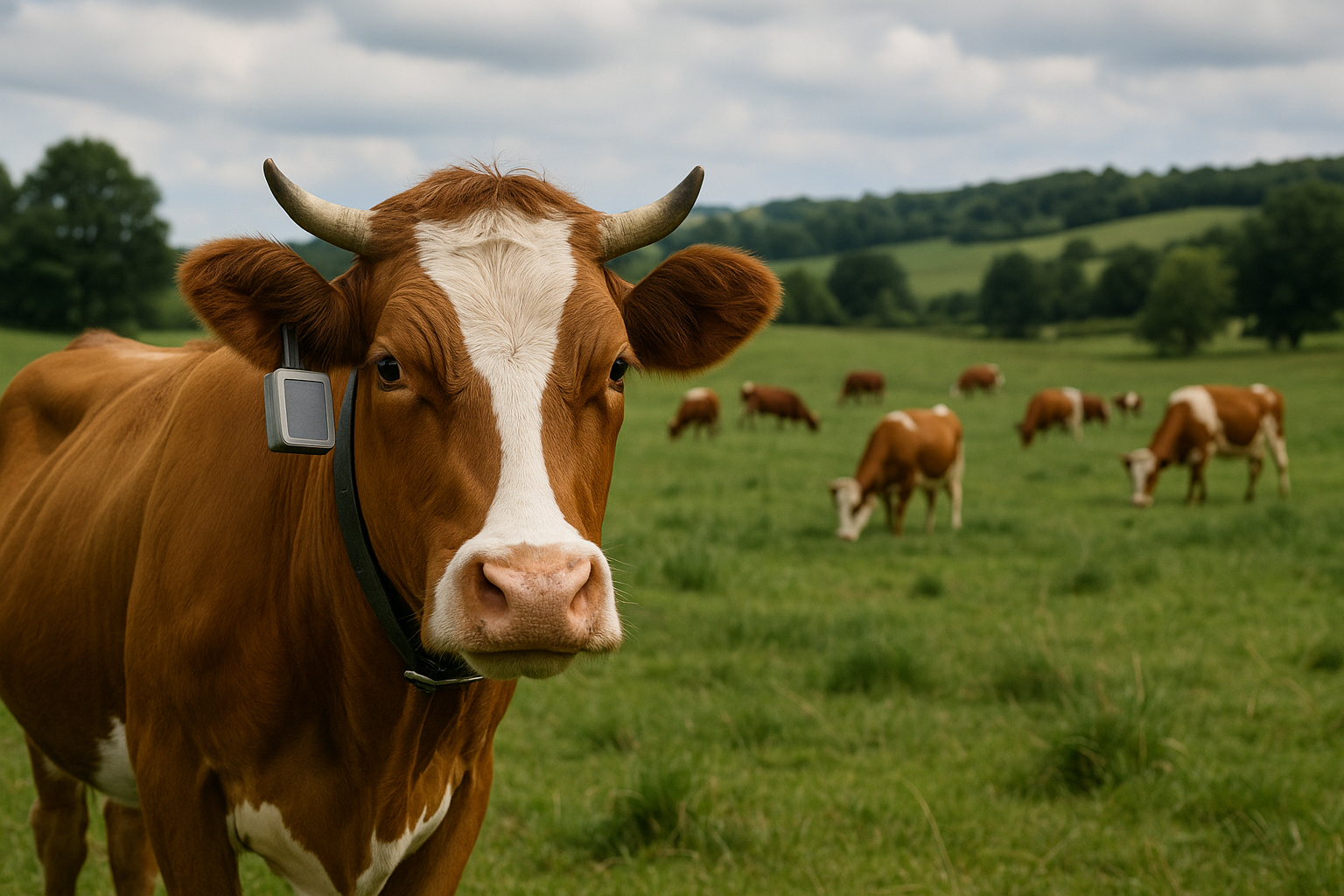AI watches the herd: Precision grazing offers hope for sustainable agriculture
Traditional assessments of grassland degradation have focused largely on remote sensing indicators like the Normalized Difference Vegetation Index (NDVI) and Leaf Area Index (LAI). While these metrics are useful, they often overlook the direct behavioral drivers of ecosystem stress, namely, the way livestock interact with their environment across space and time.

Grasslands play a key role in carbon sequestration, biodiversity conservation, and rural livelihoods. Preserving their health is not just a local concern but a global priority. In a major advance for precision grazing science, researchers have provided a novel lens into the sustainability of grassland ecosystems using machine learning. In a study published in Sensors, they offer critical evidence that monitoring animal behavior patterns, rather than just vegetation indices, can reveal early signs of land degradation, thereby helping land managers adopt more effective grazing strategies.
The study titled Spatiotemporal Mapping of Grazing Livestock Behaviours Using Machine Learning Algorithms compares livestock behavior under two common grazing management systems, continuous and rotational, using high-resolution GPS data and advanced machine learning classification models.
How can livestock behavior inform grassland health?
Traditional assessments of grassland degradation have focused largely on remote sensing indicators like the Normalized Difference Vegetation Index (NDVI) and Leaf Area Index (LAI). While these metrics are useful, they often overlook the direct behavioral drivers of ecosystem stress, namely, the way livestock interact with their environment across space and time.
This study shifts the perspective by asking how the behaviors of grazing animals themselves, specifically where and when they concentrate their activity, might shape grassland conditions. Using GPS collars, the research team tracked cattle movements across different grazing regimes in Wenchang, China. These data were then analyzed with various machine learning models to classify activity patterns with high accuracy.
The K-Nearest Neighbors (KNN) algorithm, enhanced with SMOTE-ENN resampling to handle class imbalance, delivered the best performance. It accurately classified behavioral patterns with F1 scores of 0.960 for the continuous grazing data and 0.956 for the rotational grazing data. These results demonstrate that the methodology is not only technically sound but also highly adaptable for real-time behavioral monitoring in the field.
How do continuous and rotational grazing systems compare?
One of the most striking insights from the study is how livestock behavior responded, or failed to respond, to changes in grazing intensity across different management systems. Under continuous grazing, reductions in grazing intensity did not translate into meaningful behavioral change. The cattle continued to cluster spatially and exhibited frequent temporal peaks in activity. In other words, they kept returning to the same overgrazed areas, regardless of how many animals were present or how much time had passed.
This behavior suggests a systemic limitation in the continuous grazing model. Even when stocking rates are lowered, the land does not receive a break from pressure, because the animals don’t distribute themselves evenly. Over time, this leads to localized degradation, soil compaction, and a decline in plant biodiversity.
On the other hand, the rotational grazing system showed significantly more promise. When the grazing intensity was reduced, cattle behavior became more evenly distributed across time and space. There was less clustering in specific areas, and temporal activity patterns flattened out. This indicates that rotational grazing, when implemented correctly, can give grasslands the opportunity to recover between grazing periods, improving resilience and sustainability.
These differences are critical. They underline the importance of management system design, not just the number of animals or the total area grazed, as a driver of long-term land health.
What does this mean for sustainable land use?
The study provides a data-driven foundation for rethinking how grassland health is assessed. Vegetation indices alone may be insufficient, especially when they miss the behavioral causes of degradation. By incorporating livestock movement data, land managers can intervene earlier and more precisely to prevent long-term damage.
Second, the study demonstrates the utility of artificial intelligence in environmental monitoring. Machine learning classifiers like KNN can process vast amounts of spatiotemporal data to generate accurate, real-time insights. This opens the door to smart, automated systems for pasture management that can dynamically adjust based on animal behavior, weather, and vegetation conditions.
Third, it challenges assumptions about the effectiveness of common grazing practices. Simply reducing the number of livestock is not a guaranteed solution. If animals continue to cluster in the same vulnerable zones, degradation may persist. Effective sustainability requires understanding and influencing how animals use the land, not just how many animals are present.
- READ MORE ON:
- real-time livestock behavior monitoring
- sustainable grazing practices
- AI in livestock management
- GPS-based cattle tracking
- precision agriculture livestock
- digital agriculture tools
- how machine learning tracks grazing livestock behavior
- sustainable grassland use with AI-based monitoring
- smart agriculture techniques for livestock management
- FIRST PUBLISHED IN:
- Devdiscourse










